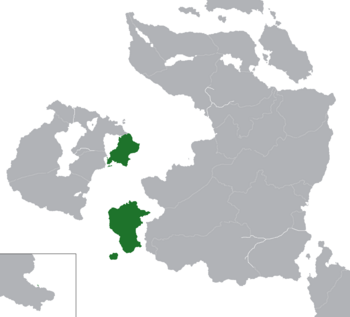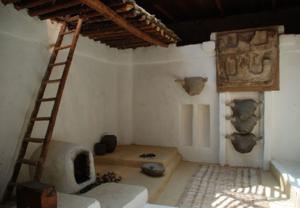Syrixia
This article is incomplete because it is pending further input from participants, or it is a work-in-progress by one author. Please comment on this article's talk page to share your input, comments and questions. Note: To contribute to this article, you may need to seek help from the author(s) of this page. |
Syrixian Empire साम्राज्य | |
|---|---|
Motto: None official | |
Anthem: "Thousands of Years" | |
 Map of the Syrixian Empire on Craviter, Collandris, and Meterra. | |
| Capital and largest city | Pataliputra |
| Official languages | None official |
| Recognised national languages | Suchari, Mercanti |
| Recognised regional languages | Durbanese, Kasov |
| Ethnic groups | 54% Samnadhi 26% Janapadhi 14% Ruritanian 3% Durbanese 2% Others 1% Kaleta |
| Demonym(s) | Imperial, Syrixian |
| Government | Constitutional monarchy |
• Emperor | Rajesh |
• State Curator | Rahul Sahab |
| Legislature | Imperial Diet |
| Formation | |
• Ascension of Emperor Adinatha | 19 AD |
• State Reform Acts | 1870 |
• Ascension of Emperor Rajesh | 2000 |
| Area | |
• Total | 371.55 km2 (143.46 sq mi) |
| Population | |
• 2018 estimate | 75,767,440 |
| GDP (nominal) | 2018 estimate |
• Total | $4.06 trillion (IBU) |
| HDI (2019) | 0.937 very high |
| Currency | Imperial Mudra |
| Time zone | UTC+1 (IST) |
| Date format | MM-DD-YYY SK |
| Driving side | right |
| Calling code | +80 |
| Internet TLD | .sa |
Here you put a summary of your nation's location, history, economic and demographic state, and organisation participation.
Etymology
The Mercanti name Syrixia is a corruption of a Kasov word- the word Siresza, which itself is a corruption of the Suchari name साम्राज्य (samraajya) meaning "empire"/"imperial state". It is not very clear, however, how this name originated. The general consensus amongst historians, however, is that it originated as a form of the word सम्राट (samraat), the Suchari word for "emperor", first coined by Emperor Rishabhanatha as an artificial replacement for the term हर्षित (harshata), the primary title used by Emperor Adinatha. This replacement was made in order to ensure that Emperor Adinatha's primary title, out of respect, was never used again.
History
Early Yuptakalpa
The oldest known settlements in the Empire were located in the Home Islands, dating to around 8000 BC. These settlements were generally located in the Khanta River Basin. These settlements generally evolved from the villages of neighbors or predecessors, using and perfecting irrigated agriculture to harness the fertility of the Khanta River Basin and controlling the formidable annual floodings of the Khanta River itself. Over the course of the succeeding millennia, villages continued to rise - and subsequently, small cities - at an exceeding rate, coalescing into the Khanta River Civilization. The breadth of the civilization increased as well, coming to encompass the entire basin.
The civilization subsisted primarily by farming, supplemented by a lucrative commerce that would come to spread across the Syrixian Home Islands, contributing to their eventual vast wealth during the early Samraajyakalpa. Crops likely cultivated at this time include sorghum, lentils, barley, sesame, and field peas; tropical fruits were also harvested. Dogs and cats were domesticated, as well as cattle and fowl; and first contact with dragons was made during this time, though none were yet tamed. The Syrixian elephant probably was also domesticated, and its ivory tusks were freely used. Minerals, unavailable from the alluvial plain, were sometimes brought in from far afield. Gold and jade, in particular, were prized, with both usually being found in the mountains surrounding the Khanta River Basin.
With time, cities grew larger and villages continued to coalesce, and cities grew their spheres of influence. Prominent cities at this time include Rehmana, Nausharo, Kaushambi, Dhola, Kayatha, Banawali, Rupara, and Chanhu; however, the most prominent and wealthy of the Khanta cities were usually located in the lower basin, near the river delta. Cities such as Charsadda, Dinya, Amri, Balakot, Kuntasi, Mitathal, and especially Kuru were prominent in this region, with Kuru serving as a major center of trade not just for the delta area, but the basin as a whole.
In addition, the cities of the Khanta River Civilization developed a palace economy, focusing their economic activities on or near central administration complexes. While at first the cities were ruled by oligarchic priesthoods, centering the early palace economies on religious complexes, gradually kings began to take their place. In turn, the palace economies shifted from city temples to luxurious royal palaces. Regardless of who controlled a city's palace economy, palace administrators supplied economic producers with the capital goods for the production of further goods and services, usually regarded as the property of the palace's ruling authority. However, though this system did create vast wealth for the civilization, it also created vast complexity and greater and greater wealth inequality.


